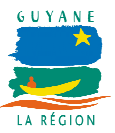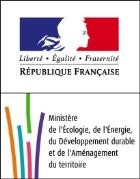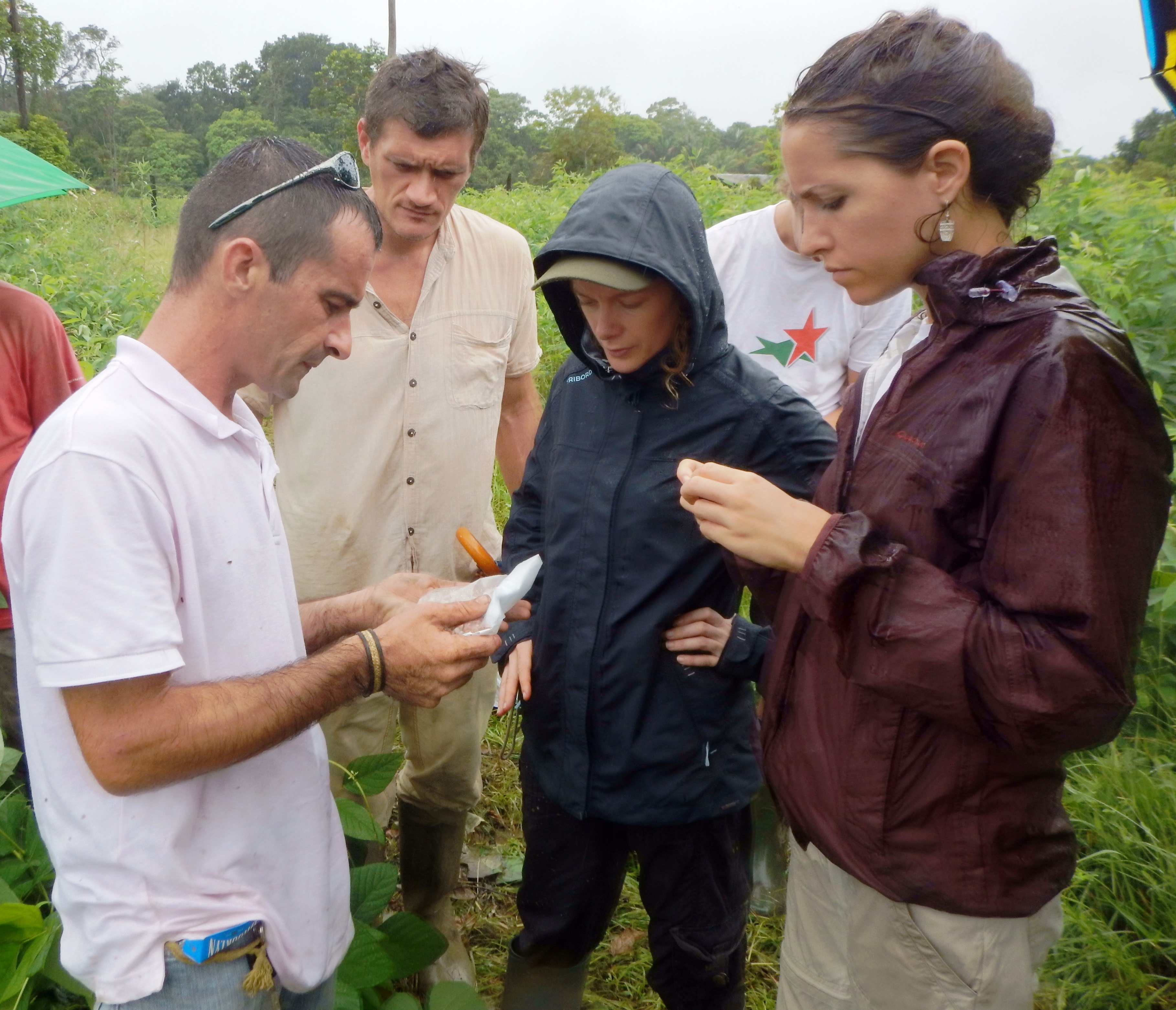
by Solicaz | Jan 25, 2016 | Advice & Training, Agriculture/Agroforestry, News 2016, Revegetation
Solicaz took part in the leguminous event at Matiti Agricultural High School, which brought together about 40 people, actors from the agricultural world.
The guests visited the fodder platform and the active fallow of the school before discovering the different experiments carried out by IKARE and Solicaz at the local level.
G. Paul has developed the subject of agroforestry with fixing trees. She presented the results of the planting of several Inga legume species (sweet pea) on degraded soil at depth to show the beneficial effects that nitrogen fixing trees can have in the agroforestry sector.
The topics covered were:
- The process of nitrogen fixation by legumes
- Practical case of the experimentation on a mine site on the ground degraded in depth.
- The advantages of agroforestry and the possible associations.
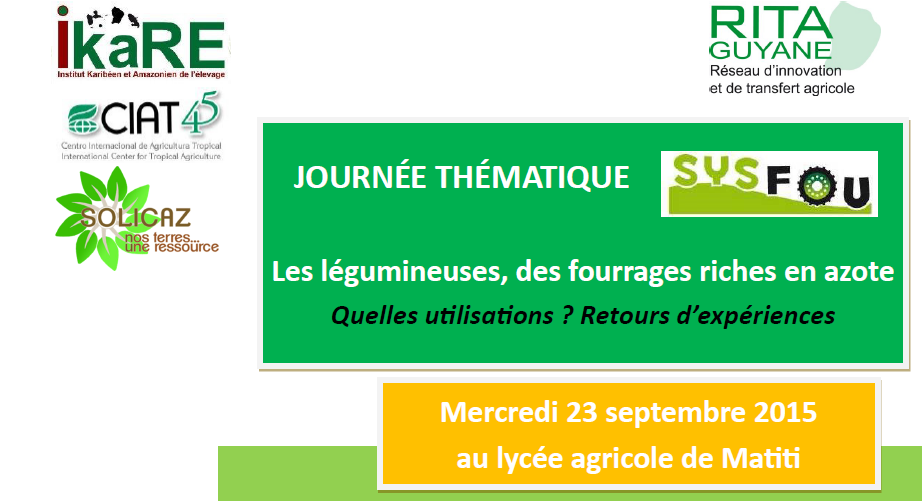
by Solicaz | Oct 9, 2015 | Agriculture/Agroforestry, News 2015
On September 23rd, 2015, Solicaz took part in the Legumes event at Matiti Agricultural High School, which brought together about 40 actors from the agricultural world.
The aim was to present the advantages of planting legumes in pastures, or on crop or fruit-growing plots to public farmers in French Guiana.
Rainer Schultze Kraft, an expert from CIAT (International Centre for Tropical Agriculture) who worked on a collection of tropical forage resources adapted to acid soils, presented a case study of successful agricultural association experiments in breeding / farming systems at the international level.
There at the Matiti Agricultural School, he highlighted the various benefits of using legumes, which improve soil fertility by providing organic matter, a structure for better soil conservation, erosion management and weed control. Legumes make it possible to produce forage of high nutritional value and high regeneration potential from a seed storage in the soil. They can also be used as an essential complement to traditional forage grasses, whose nutritional value decrease with age.
Rainer Schultze Kraft concluded his presentation by emphasizing that legumes are an important ally capable of increasing the production of meat, crops and/or trees in farming and other systems.
The guests were then able to see the fodder platform and the active fallow of the school before discovering the different experiments carried out by IKARE and SOLICAZ at the local level.
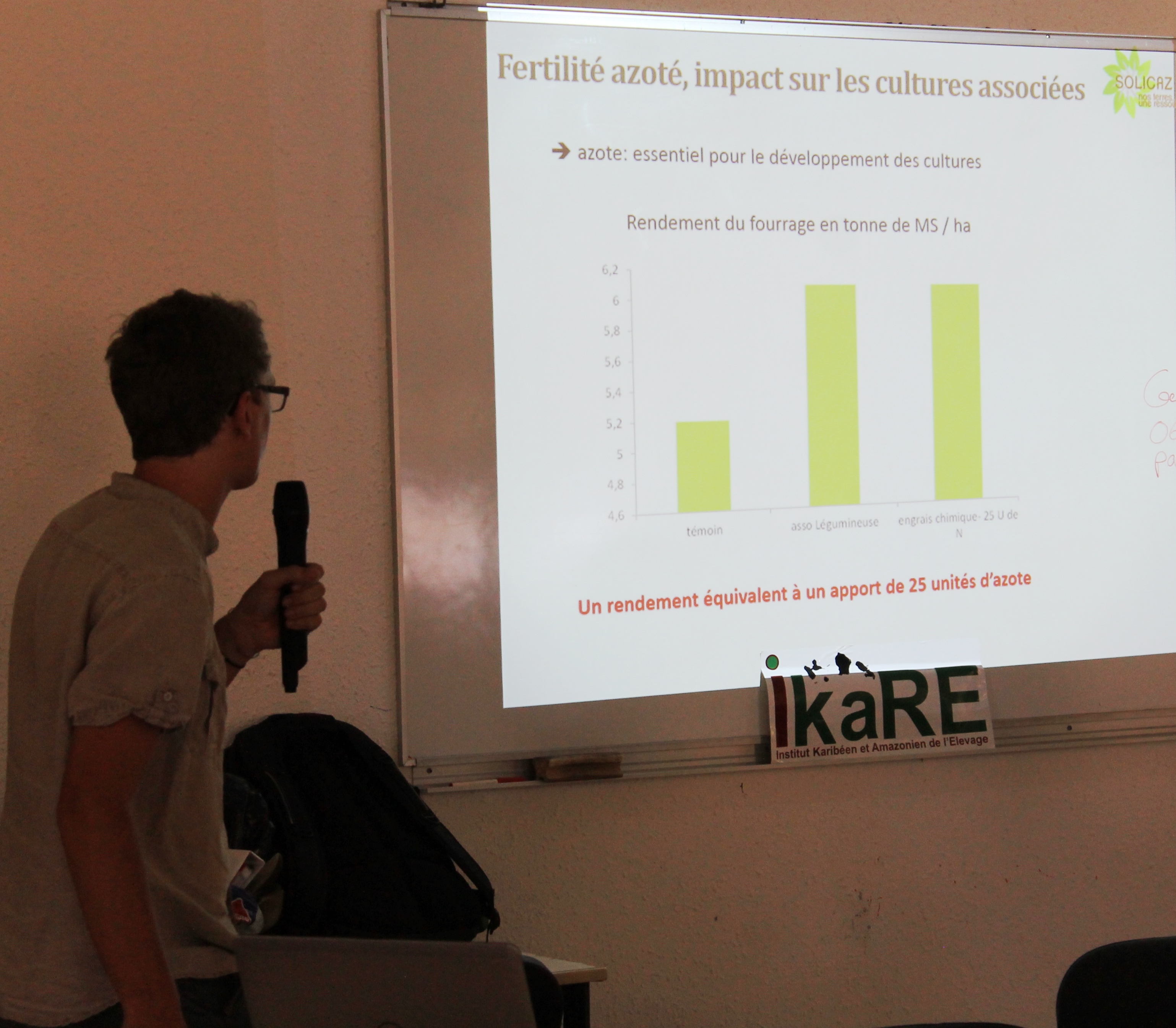
William Montaigne, Doctor of Ecology at Solicaz presented the results obtained on experiments whose aim was to improve the management of soil fertility in farming systems in French Guiana. For this purpose, an active fallow was set up with 3 legumes: Mucuna pruriens, Crotalaria ochroleuca and Cajanus cajan. After six months, high biomass production and improved soil fertility were observed as the control had been covered with weeds. The second experiment aimed to observe the impact of nitrogen fertilization on crops with a combination of Brachiaria humidicola and Desmodium ovalifolium. Two months after implantation, soil fertilization was already very promising and there was an improvement in the forage’s nutritional value.
Legumes allow for the sparing use of chemical fertilizers via their nitrogen fertilization capacities, which improves the intake and nutritious value of forage.
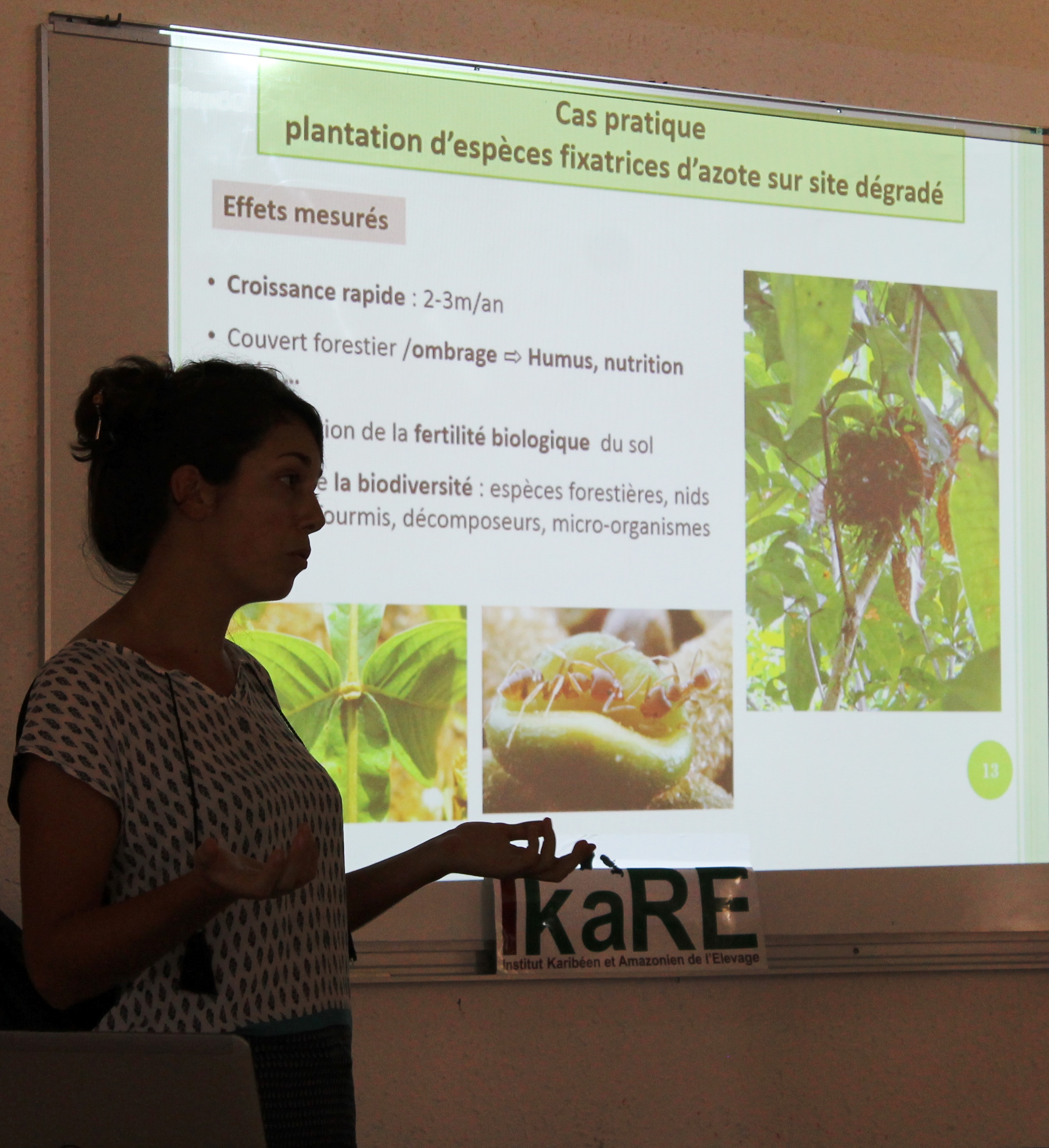
Géraldine PAUL, agricultural engineer at SOLICAZ has developed the subject of agroforestry by presenting legumes of Inga type, “sweet pea.” As part of an experiment, several species were planted on a soil that was deeply degraded. In two years, a biodiversity of flora and fauna (underground and aerial) reappeared.
Review of the day: Farmers benefit from including a legume species in their forage or crop systems. In addition to improving the structure and fertility of the soil, they save money and increase the yield of the meat, crops and biomass produced.

by Solicaz | Nov 4, 2013 | News 2011, Revegetation
Establishment of a production of nitrogen-fixing plants endemic to French Guiana for the restoration of degraded sites, carried out by Solicaz.
Appointment by the MEDDTL, as part of the National Strategy for Biodiversity 2011-2020.
Funded by: DEAL and the Regional Council of Guyana
Partners: PTMG, SMSE Mining Operator, Macouria EPLEFPA Farm, Guyane Consult, UMR Ecofog, and AMAP CIRAD.
The richness in gold of the subsoil in the French Guiana region coupled with an extremely rapid population growth generates an increase in deforestation which causes a loss of heritage of the only primary forest that Europe possesses each year. The increase in the current value of gold may accelerate this deforestation.
In an environment as disturbed as that of a mine after exploitation, the soil has lost all its fertility potential both in terms of nutrients (organic matter) and in terms of its capacity to produce it (i.e. it has lost the microorganisms capable of transforming this organic matter). Under these conditions, it seems difficult to revegetate a site without large supply of inputs and without major implementation work.
One method is to use certain plants which, because of their ability to metabolize nitrogen in the air, – thanks to their symbiosis with microorganisms, – can live on very poor soils without the use of nitrogen fertilizers. Acacia mangium, a legume native to Papua New Guinea and introduced to French Guiana several years ago has succeeded in this colonization of extremely poor soils because it can associate naturally with Rhizobium; rhizobium is widely found in French Guiana’s soils. However, the invasive character of Acacia mangium in an open environment engenders concern for large scale usage.
Previous works (Roggy et al 1999, Roggy et al, 1999 b, Roggy and Prévost 1999, Domenach et al., 2004) allowed us to identify in the French Guiana forest, species of trees endemic to this region and with qualities identical to those of Acacia mangium (rapid growth and/or moderate nitrogen fixers) and which could represent an alternative to this species.
The objective of the project is to provide the necessary tools for the establishment of a production chain of local nitrogen-fixing species adapted to the environment that can be used for its restoration or maintenance while meeting the needs of the sectors involved. For example, the mining and agricultural sectors could utilise the co-cultivation of these nitrogen-fixing species to minimize nitrogen inputs. Simultaneously, the installation of new trees could be used for the production of energy through biomass.
In order for this objective to be realized, the following is needed:
(1) the study of the production and multiplication of endemic nitrogen-fixing plants of French Guiana,
(2) the experimentation on degraded sites (e.g. mining sites) of the assembled species based on their functional traits for the restoration of biodiversity
(3) a study of the technical-economic feasibility for the establishment of a local production chain.
View the report
